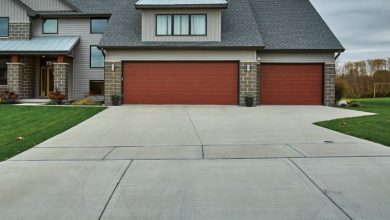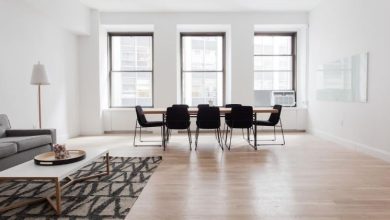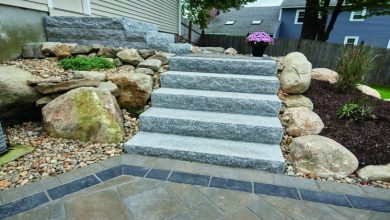Customizing Interior Shades to Match Your Home Decor

Every element in your home plays an important role in creating a cohesive and harmonious space when it comes to interior design. Shades and other window treatments are no exception. Interior shade customization to match your home decor can have a significant impact on the overall aesthetics and atmosphere of your living spaces. In this blog post, we’ll discuss the significance of customization and offer advice on how to perfectly match your shades to your interior design.
Window Treatments’ Function in Interior Design
In interior design, window treatments such as shades, blinds, curtains, and drapes serve both functional and decorative purposes. They are critical in achieving various design objectives:
- Light Control: Window treatments allow you to control how much natural light enters a room. This is critical for achieving the desired ambiance and maintaining comfort throughout the day.
- Privacy: Shades offer privacy by preventing intruders from peering into your home. The opacity and style of the shades can be used to adjust the level of privacy.
- Energy Efficiency: With proper selection and installation, window shades can help insulate your windows, reducing heat loss in the winter and heat gain in the summer. This helps with energy efficiency and lowers utility bills.
- Aesthetics: Window treatments can complement or enhance your overall decor by acting as a visual focal point. They can add color, texture, and style to a space, making them an essential component of your design scheme.
The Importance of Personalization
While ready-made window treatments are convenient and readily available, customization offers several advantages when it comes to seamlessly integrating shades into your interior shades Leesburg design:
- Perfect Fit: Custom shades are made to fit your windows precisely, ensuring a snug and precise fit. This prevents gaps, unevenness, and unsightly overhangs from occurring with generic window treatments.
- Endless Design Possibilities: When you customize shades, you have a plethora of design options at your disposal. To match your home decor, you can select from a wide range of fabrics, patterns, colors, and materials. This level of customization allows you to create the look and feel you want for each room.
- Complementing Existing Decor: Custom shades can be designed to complement existing decor elements such as furniture, flooring, and wall colors. You can choose colors that complement your decor palette, resulting in a unified and cohesive design scheme.
- Customizable Functionality: Custom shades can be created with specific functionality in mind. Customization allows you to meet your specific needs, whether you need blackout shades for a bedroom, light-filtering shades for a living room, or energy-efficient shades for a sunroom.
- One-of-a-kind Window Treatments: If you have a distinct style or want to make a one-of-a-kind design statement, custom shades give you the freedom to create one-of-a-kind window treatments that reflect your personal taste and style.
Tips for Matching Interior Shades to Your Home Decor
Now that you understand the importance of customization in interior design, let’s look at some practical tips for customizing your interior shades to match your home decor:
- Create a Color Palette
Begin by deciding on a color scheme or palette for your room. Determine the dominant primary and secondary colors in the space. Consider the colors that are already on your walls, furniture, and decor accessories. Once you’ve decided on a color scheme, you can choose shades that complement and enhance it.
- Matching Shades: Choose shades in a color that closely matches one of the palette’s dominant colors. This results in a more cohesive and harmonious appearance.
- Contrasting Shades: You can also choose shades in a contrasting color to add visual interest and focal points. For example, if your room has neutral tones, you could make a statement with bold, colored shades.
- Think About Patterns And Textures.
The patterns and textures you choose for your shades can have a big impact on the overall look of your room. Consider the following alternatives:
- Solid Colors: Solid colors are versatile and work well in a variety of design styles. They give the room a clean and unobtrusive look that complements other patterned elements.
- Subtle Patterns: If your decor already has bold patterns, choose shades with subtle patterns or textures to avoid overpowering the space. Subtle patterns can add depth and interest while remaining unobtrusive to existing patterns.
- Bold Patterns: If your decor is predominantly neutral or monochromatic, you can introduce bold patterns into the room through your shades to create a focal point and add vibrancy.
- Select the Appropriate Opacity
The opacity of your shades is critical in determining how much light and privacy they provide. Consider the following requirements for each room:
- Light-Filtering Shades: Light-filtering shades let in diffused natural light while providing privacy. They are ideal for use in living rooms and dining rooms where you want to maintain a connection with the outdoors while maintaining privacy.
- Blackout Shades: Blackout shades are ideal for bedrooms, home theaters, and any other space where complete darkness is desired. They effectively block out almost all external light sources, allowing for a restful night’s sleep or optimal viewing conditions.
- Sheer or Semi-Sheer Shades: Sheer or semi-sheer shades allow maximum light penetration while still providing some privacy. In places like kitchens and sunrooms, they create an airy and ethereal atmosphere.
- Think about the Material
The material used for your custom shades has a significant impact on the overall look and feel of your decor:
- Fabric: Fabric shades come in a variety of materials, including linen, cotton, silk, and polyester. The material you select can convey a variety of aesthetics, ranging from casual and relaxed to formal and elegant.
- Natural Materials: Natural materials such as bamboo, grass, or wood shades add a touch of organic warmth to your decor. They complement eco-friendly and bohemian design styles.
- Synthetic Materials: Synthetic materials, such as vinyl or polyester, are long-lasting and moisture-resistant, making them ideal for humid environments such as bathrooms and kitchens. They also have a sleek and modern appearance.
- Think About Motorization.
Consider motorized shades for a touch of modern convenience and sophistication. Motorization enables you to easily raise and lower your shades, often via remote controls or smartphone apps. Because motorized shades eliminate the need for visible cords or chains, they not only improve functionality but also contribute to a clean and uncluttered appearance.
- Seek Professional Help
Customizing shades to match your home decor can be a complex process, and professional advice can be invaluable. Interior designers and window treatment specialists can offer advice, recommendations, and access to a variety of customization options. They can assist you in making informed decisions that are in line with your design vision and practical requirements, view the Shade Brothers’ website.
Conclusion
Interior shade customization to match your home decor is a creative and personal process that allows you to improve the aesthetics and functionality of your living spaces. You can create shades that seamlessly integrate into your interior design, enhancing the overall atmosphere and appeal of your home, by carefully considering factors such as color, pattern, opacity, material, and motorization. Customization allows you to achieve a tailored look that reflects your unique style and taste, whether you choose subtle, coordinating shades or bold, statement-making window treatments.




